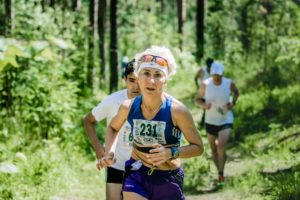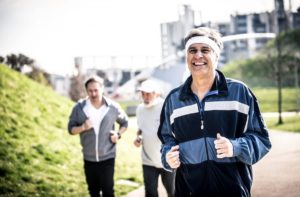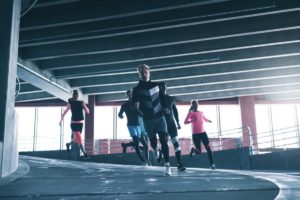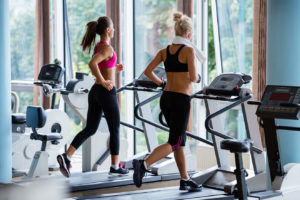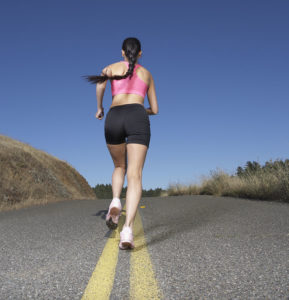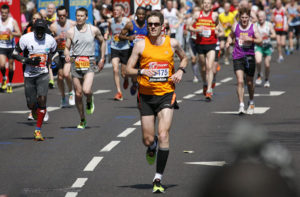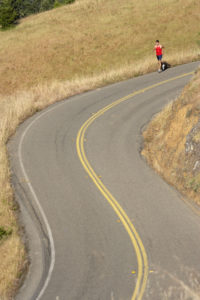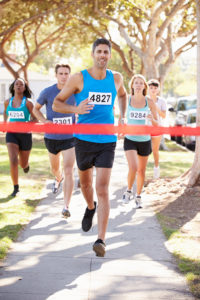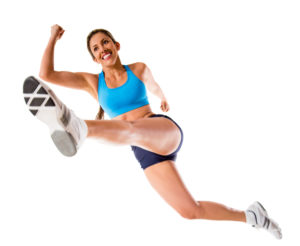Running
Creative ideas that Inspire
Rumble at Rebel in London is a high-energy HIIT format in a fully immersive environment. With low, creative lighting and a specially curated soundtrack, participants build strength with explosive speed as they punch, jab and perfect their boxing footwork in “a cardio boxing battle that’s no holds barred.” The gym, which has two locations, also features an adjacent hair salon where participants can go after their class for a blow dry, cut, beard trim or other beauty service.
Women Who Run Marathons Have Lower Coronary Plaque Buildup
Ladies: Lace up those tennies. According to new research, women who regularly complete marathons have less coronary-plaque buildup—and therefore a lower risk of stroke or heart attack—than sedentary women.
Is There a Best Place to Wear a Heart Rate Monitor?
With heart rate monitors, where you place them may determine how accurate they are, according to data published in the Journal of the College of Cardiology (2017; 69 [11], 336).
The “New” Knee Ligament, Rediscovered
Hasn't the knee been thoroughly mapped? Perhaps. However, the following bold headline reverberated throughout the allied health community in 2013: "Doctors Identify a New Knee Ligament."
Really?
The Physiology of Sprint Interval Training
If your clients haven't already asked you about it, they will. High-intensity interval training is a mainstay in personal training programs and group fitness classes. There are several reasons why HIIT is a good workout, one of them being its brevity. Research indicates that the four most common barriers to exercise are not having time, feeling too tired, getting enough exercise at one's job, and having no motivation to exercise (Brownson et al. 2001).
Shoe Type Affects Running Speed
It’s logical to think heavier footwear can decrease movement economy and running time. The results of a new study get more specific.
Running Improves Brain Function in Young Runners
Looking to boost brain power? You may want to lace up those sneakers and head out for a long run, suggest researchers from the University of Arizona.
While there’s been plenty of study on exercise and brain function, these UA researchers wanted to know if a movement requiring little motor-control precision—like distance running—could affect neuroplasticity, the brain’s ability to form new neural connections. Most research to date has focused on older adults, but this study targeted younger minds.
Can Running Help Inflammation in Knee Joints?
Regular running is often associated with knee problems. However, there’s one condition that researchers now believe may improve with running: inflammation.
The 4 Most Common Running Injuries and How to Address Them
Use corrective exercise to help clients stay on track with their mileage goals.
Can Barefoot Running Prevent Injury?
There’s plenty of discussion about whether barefoot running helps runners or harms them. A new report suggests that females may benefit from employing this controversial protocol.
Treadmill Performance and Mortality Link
nterested in predicting how long you’ll live? Hop on the treadmill. That’s according to researchers from the Johns Hopkins University School of Medicine, who have developed a formula they say can be used to predict 10-year survival.
To develop this formula, the researchers studied data for 58,020 individuals aged 18–96, who underwent standard exercise stress testing between 1991 and 2009 to determine how well their heart and lungs responded to walking at increasing speeds. Subjects were required to be free of heart disease.
Older Runners: Beware of Switching to Barefoot
Do you work with anyone who is interested in running barefoot or trading traditional running shoes for minimalist footwear? According
to research presented at the American Academy of Orthopaedic Surgeons 2015 Annual Meeting, some runners over 30 who transition to barefoot have difficulty adapting to the potentially less injury-prone forefoot strike pattern.
Why Older Adults Should Run More
It’s best to slow down as we get older—or is it? A new study in PLOS ONE (2014; doi: 10.1371/ journal.pone.0113471) suggests otherwise.
Understanding and Preventing Common Running Injuries
Long-distance running continues to attract new enthusiasts throughout the world (Tonoli et al. 2010); its unique combination of benefits can help people to control their weight, improve cardiovascular function and fend off a host of chronic health problems (van Gent et al. 2007; van Middelkoop et al. 2008). But for all these advantages, running is hard on some parts of the body, often leading to lower-extremity injuries (van Middelkoop et al. 2008).
What Are Running Injuries, and How Prevalent Are They?
Training for a Marathon
Whether you want to run a marathon for the thrill of it, to cross it off your bucket list or to qualify for the prestigious Boston Marathon, it all starts with a single step. When you put together enough steps to cover 26.2 miles, you become a marathoner!
So how do you run a marathon? Jason Karp, PhD, the 2011 IDEA Personal Trainer of the Year and author of Running a Marathon for Dummies, gives you strategies below.
Mileage
Health Profiles Of Extreme Marathoners
The potentially negative impact of extreme endurance events has recently been garnering attention. A new study takes a deeper look at the health profiles of event participants.
Published in PLOS ONE (doi: 10.1371/journal.pone.0083867), the Ultrarunners Longitudinal Tracking Study included 1,212 active ultramarathon runners. Participants completed a Web-based survey that asked about training protocols, medical issues and running-related injuries in the previous 12 months.
Novice Marathoners Beware
According to www.findmymarathon.com, 529,435 people finished marathons in the United States and Canada in 2012. Although marathon running is a pop- ular sport, recent research warns that “amateur runners” who participate may increase their cardiac risk.
The Right Way to Train for a Marathon
To paraphrase an ancient Chinese philosopher, “A journey of 26.2 miles begins with a single step.” From the time the Greek runner Pheidippides ran from Marathon to Athens in 490 BC to announce the Greeks’ victory in the Battle of Marathon, humans have had a compelling interest in taking that single step–and many more after it.
Does Foot Pronation Cause Injury?
When starting a running program, beginners always want to put their best foot forward. To avoid injury, many purchase a supportive shoe that minimizes excess movement in the foot. Researchers from Aarhus University in Aarhus, Denmark, suggest that this may not always be necessary.
All in the Family
Linda Pimentel, owner of Origins of Inner Strength Inc., in Mesquite, Texas, has made Pilates transformations a family affair. She frequently works with families, couples and mother-daughter teams. “I usually work individually at first, to establish boundaries,” she says. “For example, the mother needs to know that during our sessions she isn’t in charge, and the daughter doesn’t get to show off in front of mom.”
- « Previous
- 1
- 2
- 3
- Next »

